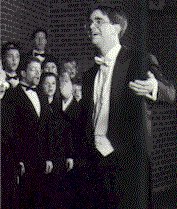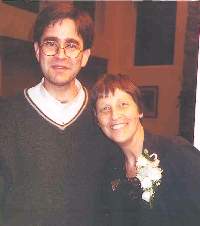Return to Gwyneth Walker Music Catalog
Read a review of Harlem Songs (2000) for SATB chorus and piano by Rie Sadler, Bowie Blade-News.
Read a review of Harlem Songs (2000) for SATB chorus and piano by Orson Scott Card, The Rhinocerous Times.
Read a letter from Michele Edwards, April 21, 2005 ("Harlem Songs" performance notes and questions).
Read Letter from Bruce Gladstone, May 29, 2008 ("Harlem Songs" performance notes and questions)
Listen to a RealAudio (G2) stream of the first movement of this work performed by the Chesapeake Chorale, Paul Rardin, conductor.
Listen to a RealAudio (G2) stream of the second movement of this work.
Listen to a RealAudio (G2) stream of the third movement of this work.
Download an an MP3 file of the first movement of this work performed by the Holland Chorale, Gary W. Bogle, conductor.
Download an an MP3 file of the second movement of this work.
Download an an MP3 file of the third movement of this work.
Download an an MP3 file of the first movement of this work performed by the Chesapeake Chorale, Paul Rardin, conductor.
Download an an MP3 file of the second movement of this work.
Download an an MP3 file of the third movement of this work.
Download an an MP3 file of the third movement of this work performed by the Assumption College Chorale, Michelle Graveline, conductor.
View/download a perusal PDF file of the first movement of this work.
View/download a perusal PDF file of the second movement of this work.
View/download a perusal PDF file of the third movement of this work.
Download a PDF file of the poetry used in this work as text for printing in concert programs.
(First photograph of Paul Rardin and members of the Chesapeake Chorale; photo by Kanji Takeno; second photograph of Paul Rardin and Gwyneth Walker after world premiere.)

Commissioned by the Chesapeake Chorale, Paul Rardin, Artistic Director.
Harlem Songs are musical settings of the poetry of Langston Hughes (1902-67), an African-American poet who lived most of his life in Harlem, NY. His poetry was inspired by the culture of Harlem: spirituals and blues, urban streets and rooftops, faith and endurance. The language is direct, uncluttered and colorful. It is highly American!

"Spirituals" is a song of strength. It opens with ascending patterns: "the rising shafts of mountains...something strong to put my hands on." The focus then shifts to the strength of song in times of trouble: "I heard my mother singing when life hurt her: Gonna ride in my chariot someday!" The music rises to the affirmation "Sing, O black mother! Song is a strong thing."
"Harlem Night Song" is infused with the language of blues: major/minor tonalities mixed, a gentle tempo, humming. This is nocturnal, atmospheric music. The chorus sings "I love you" back and forth, as though calling across the Harlem rooftops. A change of pace in the middle of the song: "Down the street, a band is playing..." Scat singing, percussive vocal effects and random patterns of "I love you" bring the song to a close.
"Tambourines" employs a variety of hand-tapping patterns and vocal sounds to suggest the playing of a tambourine. The intent is to capture the spirit and joy of playing a tambourine (or, an imaginary tambourine!). These "pseudo-tambourines" then accompany several gospel tunes inserted into the middle of this song. A joyous closing section celebrates: "tambourines to the glory of God!"
Notes by the composer
Note: Regarding "swing rhythm" in the third song, "Tambourines": the swing rhythm section starts in m. 37. At m. 49, the eighths are once again regular (just as in the beginning). In m. 65, this is in swing rhythm, returning to regular eighths at m. 89.